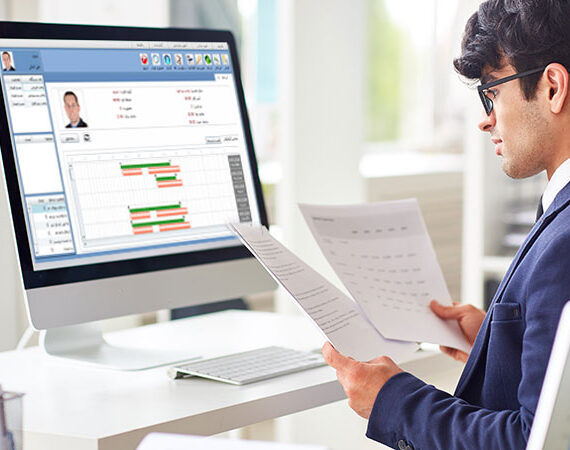- Home
- About Us
- Products
- Electronic Article Surveillance System EAS / Retail Anti theft Systems
- Display Stands
- Restaurant Pager
- People Counting Systems
- Queue Management Systems
- Access Control System
- Time Attendance Systems
- Audio & Visual System Solutions
- Display Solutions
- CCTV Cameras in Qatar: Enhancing Security Solutions
- Time Lapse Construction Camera
- Flap Barrier, Speed Gates, Turnstiles Access Control
- Gate Barriers System & Bollards in Qatar
- Parking Management & Gate Automation
- Library Management Systems
- IT & Telecom
- Lockers & Key Management Systems
- Intrusion Alarm System
- Perimeter Security
- Vehicle Tracking
- Time Recorders & Time Stamps
- Emergency Exit Door Alarms
- Clients
- Contact Us
- Support
Contents
- 1 Timesheet Management in Qatar
- 1.1 What is Timesheet Management?
- 1.1.1 Benefits of Timesheet Management Systems
- 1.1.1.1 1. Enhanced Productivity
- 1.1.1.2 2. Accurate Payroll Processing
- 1.1.1.3 3. Improved Compliance
- 1.1.1.4 4. Efficient Project Management
- 1.1.1.5 5. Reduced Time Theft and Buddy Punching
- 1.1.1.6 6. Remote Work Support
- 1.1.1.7 7. Employee Accountability and Transparency
- 1.1.1.8 8. Data-Driven Decision Making
- 1.1.1.9 9. Centralized HR Operations
- 1.1.1.10 10. Scalability for Growing Businesses
- 1.1.2 Essential Features of Modern Timesheet Management Systems
- 1.1.3 Uses of Timesheet Management Systems in Qatar
- 1.1.4 Top Timesheet Management Brand: 360 TNA
- 1.1.5 Why Choose Axle Systems for Timesheet Management in Qatar?
- 1.1.6 What Sets Us Apart?
- 1.1.7 Contact Axle Systems
- 1.1.8 Common FAQs about Timesheet Management
- 1.1.9 Final Thoughts
- 1.1 What is Timesheet Management?
Timesheet Management in Qatar
In the fast-paced business environment of Qatar, where productivity, compliance, and operational accuracy are key, managing employee time effectively is essential. Whether it’s a construction company tracking field employees, an IT firm logging project hours, or a healthcare provider ensuring accurate shift timings, Timesheet Management plays a pivotal role in aligning workforce efforts with business goals.
At Axle Systems, we understand the importance of accurate, flexible, and smart timesheet solutions. As a trusted supplier of Timesheet Management Systems in Qatar, we offer comprehensive solutions including advanced platforms like 360 TNA, designed to meet the diverse needs of modern organizations.
In this blog, we’ll explore the concept of Timesheet Management, its benefits, key features, real-world applications, top brands like 360 TNA, and how Axle Systems can help your business enhance productivity and compliance.
What is Timesheet Management?
Timesheet management refers to the systematic recording, tracking, and analyzing of employee work hours over specific periods. This system allows businesses to monitor attendance, calculate payroll, manage leave, track billable hours, and evaluate employee performance.
Modern Timesheet Management systems go far beyond simple punch-in and punch-out mechanisms. They integrate with biometric devices, mobile apps, GPS tracking, project management tools, and payroll systems—creating a seamless ecosystem for workforce management.
Core Components of a Timesheet System:
- Time Logging Interface (manual or automated)
- Attendance & Leave Management
- Approval Workflows
- Overtime Calculations
- Integration with Payroll and HR Software
- Mobile Accessibility
- Real-Time Reporting
Benefits of Timesheet Management Systems
Implementing a robust Timesheet Management system brings measurable benefits to organizations, regardless of their size, structure, or industry. It not only streamlines daily operations but also supports long-term strategic decisions. Below are the detailed benefits:
1. Enhanced Productivity
A well-implemented Timesheet Management system creates a sense of accountability and time-awareness among employees. When staff know their working hours are being tracked and reviewed, they are naturally more mindful of how they use their time.
- Self-Regulation: Employees tend to organize their workdays better and reduce idle time.
- Task Prioritization: Time logs help workers recognize how long they spend on specific tasks, allowing for better prioritization of critical assignments.
- Managerial Oversight: Supervisors can identify tasks that consume excessive time and make adjustments to workflows or provide targeted training.
This boost in time-consciousness translates into higher output, more efficient processes, and ultimately improved organizational performance.
2. Accurate Payroll Processing
Payroll accuracy is a cornerstone of employee satisfaction and business integrity. Timesheet Management systems automatically calculate total working hours, breaks, overtime, and absences.
- Error-Free Calculations: Reduce or eliminate manual payroll errors caused by missed entries or miscalculations.
- Integration with Payroll Systems: Direct export of data into payroll systems ensures smooth processing.
- Support for Complex Pay Structures: Accommodate varying pay rates, shift differentials, holiday pay, and bonuses with ease.
This level of precision helps businesses maintain trust with employees and reduces the likelihood of wage disputes, non-compliance penalties, or back payments.
3. Improved Compliance
In countries like Qatar, where labor laws and government regulations are strictly enforced, maintaining compliant records is vital.
- Labor Law Adherence: Timesheet Management systems help organizations meet requirements set by Qatar’s Ministry of Labour, such as legal working hours, rest days, and overtime rules.
- Audit-Ready Reports: Generate detailed and tamper-proof records for inspections and internal or external audits.
- Policy Enforcement: Automatically restrict excessive overtime or unapproved shifts, ensuring employees and managers adhere to internal HR policies.
This not only protects the organization from potential legal complications but also fosters ethical labor practices.
4. Efficient Project Management
For project-oriented businesses like construction, IT, or consultancy, knowing how much time is spent on specific tasks or deliverables is critical.
- Task-Based Time Tracking: Allocate time entries to specific tasks or projects to understand time distribution.
- Resource Allocation: Identify over- or under-utilized staff to better allocate resources across multiple projects.
- Budget Management: Use historical time data to create accurate project estimates and budgets.
- Client Billing: Improve billing transparency with accurate, auditable records of time spent on client projects.
This improves not only operational efficiency but also client satisfaction and profitability through precise, fair billing.
5. Reduced Time Theft and Buddy Punching
Time theft—whether intentional or accidental—costs businesses thousands of riyals annually. Manual systems are vulnerable to practices like buddy punching (one employee clocking in for another), early check-ins, or extended breaks.
- Biometric Verification: Fingerprint or facial recognition ensures only the employee can log their own time.
- GPS & Geo-Fencing: Confirms that employees are clocking in from authorized locations—especially useful for field teams.
- Real-Time Alerts: Supervisors are notified of irregular clock-ins or discrepancies in schedules.
By minimizing dishonest practices, companies maintain a more ethical, performance-driven culture and reduce payroll losses.
6. Remote Work Support
With remote and hybrid work models becoming more common across industries in Qatar, timesheet systems are crucial in ensuring accountability without physical oversight.
- Mobile Accessibility: Employees can log time from smartphones or tablets, whether working from home or a client site.
- Cloud-Based Syncing: Managers can view time entries in real-time and make decisions based on up-to-date information.
- Self-Service Portals: Staff can submit leave requests, view timesheet history, and update their working hours with minimal HR intervention.
This level of flexibility helps businesses retain talent, support remote work policies, and ensure continuity in operations across multiple locations.
7. Employee Accountability and Transparency
When employees and management both have access to time data, it fosters a culture of transparency and mutual trust.
- Performance Insights: Timesheet analytics highlight productivity trends, enabling informed performance evaluations.
- Identifying Bottlenecks: Managers can easily spot time-consuming processes or recurring delays.
- Ownership of Work Hours: When employees track their own time, they become more responsible and committed to maintaining punctuality and completing tasks efficiently.
Transparency in attendance and time tracking leads to better communication, improved morale, and higher levels of trust within the organization.
8. Data-Driven Decision Making
Timesheet Management data is a goldmine of insights that can inform everything from staffing to strategic planning.
- Trend Analysis: Track attendance trends, peak productivity hours, or frequent absences.
- Departmental Comparisons: Analyze which departments are performing better and which may need support.
- Operational Adjustments: Adjust business hours, shifts, or staffing based on real usage patterns.
By turning raw time data into actionable insights, organizations can continuously refine their operations and stay competitive.
9. Centralized HR Operations
Integrating Timesheet Management with other HR functions streamlines administrative workflows.
- Unified Records: Combine attendance, leave, payroll, and performance in one platform.
- Automated Reminders: Remind employees and managers of pending approvals or submissions.
- Simplified Audits and Reviews: All records are stored digitally and can be easily accessed for evaluations or compliance checks.
This consolidation not only saves time but also reduces the likelihood of human error and data duplication.
10. Scalability for Growing Businesses
Whether you have 10 employees or 10,000, Timesheet Management systems can scale with your business.
- Custom Role Access: Set different access levels for employees, supervisors, HR personnel, and executives.
- Multi-Location Support: Manage workforce time across multiple offices or worksites from one centralized dashboard.
- Flexible Configurations: Adapt workflows, approval hierarchies, and shift types as your organization evolves.
This ensures that your investment in Timesheet Management remains viable and valuable as your business grows.
Essential Features of Modern Timesheet Management Systems
Today’s timesheet management solutions are far more sophisticated than traditional paper-based methods or basic spreadsheets. They come equipped with a range of features designed to maximize efficiency and provide deep insights:
- Automated Time Tracking: This is a cornerstone feature. Instead of manual entry, systems can offer:
- Start/Stop Timers: Employees can simply click to start and stop tracking time for specific tasks or projects.
- Automatic Activity Tracking: Some advanced systems can track computer activity (applications used, websites visited) to provide a more detailed overview of how time is spent. This feature usually comes with privacy settings and employee consent.
- GPS/Geofencing: Ideal for field staff or remote workers, allowing clock-in/out only when within designated work areas.
- Web Check-in/Out: Convenient for office-based or remote employees to clock in/out via a web browser.
- Mobile Apps: For on-the-go time tracking from smartphones.
- Project and Task Management Integration: Seamlessly link time entries to specific projects, sub-projects, and individual tasks. This provides granular insights into project progress and resource allocation.
- Customizable Reporting and Analytics: Generate a variety of reports tailored to your needs, including:
- Employee hours and attendance reports
- Project cost reports (actual vs. estimated)
- Billable vs. non-billable hours
- Overtime reports
- Leave and absence tracking
- Productivity analysis
- Utilization rates
- These reports offer real-time insights for informed decision-making.
- Approval Workflows: Implement multi-level approval processes for Timesheet Management, ensuring accuracy and accountability before payroll or billing. Managers can review, edit, and approve submissions efficiently.
- Leave and Absence Management: Integrate leave requests, approvals, and tracking (vacation, sick leave, public holidays) directly into the Timesheet Management system, simplifying HR processes and ensuring compliance with company policies.
- Overtime Management: Automatically calculate and track overtime hours based on predefined rules and labor laws, ensuring accurate compensation.
- Integration Capabilities: The ability to seamlessly integrate with other essential business systems is crucial, such as:
- Payroll Systems: Automate payroll processing based on verified Timesheet Management data.
- HR Management Systems (HRMS): Consolidate employee data and streamline HR workflows.
- Accounting Software: Facilitate accurate billing and financial reporting.
- Project Management Tools: Ensure consistency between project planning and actual time spent.
- CRM Systems: For client-specific time tracking and billing.
- User-Friendly Interface: An intuitive and easy-to-navigate interface for both employees and administrators is vital for high adoption rates and accurate data entry. This often includes support for multiple languages, such as Arabic and English for the Qatar market.
- Scalability: The system should be able to grow with your business, accommodating an increasing number of employees, projects, and data without compromising performance.
- Security and Data Privacy: Robust security measures, including data encryption, secure cloud storage, and role-based access controls, are essential to protect sensitive employee and project information and ensure compliance with data privacy regulations.
- Automated Alerts and Notifications: Send reminders for Timesheet Management submissions, notify managers of pending approvals, or alert about approaching deadlines.
- Self-Service Functionalities: Allow employees to view their attendance history, leave balances, and apply for leave independently, reducing administrative burden.
Uses of Timesheet Management Systems in Qatar
Timesheet management has widespread applications across industries in Qatar. Here’s how different sectors benefit:
1. Construction and Contracting
Track site attendance, allocate labor costs to projects, manage multiple sites, and ensure compliance with labor regulations.
2. Corporate Offices
Maintain punctuality, simplify attendance for HR, and integrate with HRMS systems for streamlined operations.
3. Healthcare and Hospitals
Manage shift rotations, night duties, emergency on-call hours, and ensure timely payroll for healthcare staff.
4. Education Sector
Record working hours of academic and non-academic staff, support part-time contracts, and manage hourly teaching loads.
5. Retail and Hospitality
Efficiently handle large workforces, temporary staff, and complex shift patterns.
6. Government and Public Sector
Ensure transparent time tracking, reporting for audits, and adherence to legal employment practices.
7. IT and Consulting
Support for project-based billing, time tracking by client or task, and integration with project management tools like Jira or Trello.
8. Remote and Field Workforce
Enable mobile-based check-ins with GPS, ensuring accountability for distributed teams.
Top Timesheet Management Brand: 360 TNA
Among the leading names in timesheet management, 360 TNA stands out with its innovative features and adaptability for organizations in Qatar.
Why Choose 360 TNA?
- Device-less Attendance System: Eliminates the need for physical biometric devices. Employees use smartphones for clock-ins.
- Geolocation Support: Location tracking ensures field workers are where they should be.
- Cloud-Based Platform: Access data in real-time from anywhere.
- Employee Self-Service Portal: Staff can check their schedules, apply for leave, and track attendance history.
- Custom Reports: Generate detailed reports based on attendance, overtime, or specific departments.
- Multi-Language Interface: Supports Arabic and English, suitable for Qatar’s diverse workforce.
- MOI Compliance: Designed to meet local regulatory standards.
Why Choose Axle Systems for Timesheet Management in Qatar?
Axle Systems is one of Qatar’s most trusted suppliers of integrated security and workforce management solutions. With years of experience and a customer-centric approach, we ensure that our clients get reliable and scalable solutions tailored to their needs.
What Sets Us Apart?
- Authorized Supplier of 360 TNA
- Customized Deployment for Any Industry
- Expert Consultation and Demonstration
- Local Technical Support and Training
- MOI and Labor Law Compliant Solutions
- Affordable and Scalable Packages
Whether you’re a startup, SME, or a large enterprise, Axle Systems can help design, implement, and support the right timesheet management system to streamline your workforce operations.
Contact Axle Systems
Ready to transform how your organization tracks time?
Address: Al Khalidiya Street, Najma, Doha, Qatar
Phone: +974 4468 2391
Email: info@axlesys.com
Website: www.axlesys.com
Let us help you manage your workforce more efficiently with modern timesheet solutions tailored for Qatar’s business environment.
Common FAQs about Timesheet Management
To provide further clarity, here are some frequently asked questions about timesheet management:
1. What is a timesheet?
A timesheet is a record of the amount of time an employee has spent working during a fixed period (e.g., a day, week, or month), often including details about specific tasks, projects, or clients they worked on.
2. Why are timesheets important for businesses?
Timesheets are crucial for accurate payroll, precise client billing, effective project management, improved employee productivity, ensuring compliance with labor laws, data-driven decision-making, and overall cost optimization.
3. Are timesheets only for hourly employees?
While timesheets are essential for tracking hourly wages, they are also highly beneficial for salaried employees. For salaried staff, timesheets help track time spent on specific projects, analyze project profitability, monitor resource allocation, and assess overall productivity, even if their pay isn’t directly tied to hours worked.
4. How do timesheets help with project profitability?
Timesheets allow businesses to track the actual time spent on each project and task. By comparing this to estimated times and allocated budgets, managers can identify areas of inefficiency, cost overruns, and ultimately determine the true profitability of a project. This data helps in refining future project estimates and pricing.
5. Can timesheet management prevent “buddy punching” or time fraud?
Yes, modern timesheet management systems, especially those with biometric features (like face recognition in 360 TNA’s mobile app) or GPS/geofencing, significantly reduce the risk of “buddy punching” (one employee clocking in for another) and other forms of time fraud.
6. Is timesheet data confidential?
While timesheets themselves are generally not considered confidential in the same way as personal employee records, the detailed information contained within them (e.g., project details, client names, individual performance metrics) can be sensitive. Robust timesheet software includes security features like role-based access controls and data encryption to protect this information.
7. How often should employees fill out timesheets?
Ideally, employees should log their time daily. This ensures accuracy and reduces the likelihood of forgetting details. Some systems even encourage real-time tracking as tasks are completed. While weekly submissions are common, daily tracking provides more precise data.
8. What are the legal implications of inaccurate timesheets?
Inaccurate timesheets can lead to serious legal consequences, including violations of labor laws (e.g., Fair Labor Standards Act), wage disputes, and potential lawsuits. Maintaining accurate and compliant timesheet records is crucial to avoid such issues.
9. Can timesheet software integrate with my existing payroll system?
Most modern timesheet management solutions are designed with integration capabilities. They can seamlessly connect with popular payroll, HR, and accounting systems, automating data transfer and reducing manual entry errors.
10. How can I get employee buy-in for a new timesheet system?
Employee buy-in is crucial for successful implementation. Key strategies include: * Clear Communication: Explain why timesheets are important (e.g., for accurate pay, fair workload distribution, project success). * Training: Provide comprehensive training on how to use the new system effectively. * User-Friendly Software: Choose a system that is intuitive and easy to navigate. * Transparency: Allow employees to view their own timesheet data and understand the approval process. * Address Concerns: Listen to employee feedback and address any concerns they may have about monitoring or complexity.
11. What is the difference between time tracking and timesheet management?
Time tracking is the act of recording time spent on tasks. Timesheet management is a broader concept that includes the processes, policies, and systems used to collect, review, approve, analyze, and report on that tracked time, integrating it with other business functions like payroll and project management.
12. How does timesheet management benefit remote teams?
For remote teams, timesheet management provides essential visibility and accountability. It helps managers understand how remote employees are spending their time, track progress on projects, ensure fair compensation regardless of location, and maintain overall productivity across distributed workforces.
13. What should I look for when choosing a timesheet management system for my business in Qatar?
When choosing a system, consider: * Your specific business needs: What problems are you trying to solve? (e.g., payroll accuracy, project profitability, remote work tracking). * Key features: Does it offer automated tracking, robust reporting, integration with your existing systems, and mobile accessibility? * User-friendliness: Is it easy for employees and managers to use? Does it support Arabic and English? * Scalability: Can it grow with your business? * Security and Compliance: Does it meet data security standards and local labor laws? * Customer Support: Is reliable local support available? * Cost-effectiveness: Does it fit your budget, considering both initial investment and ongoing operational costs? (360 TNA’s device-less model offers a significant advantage here).
Final Thoughts
Timesheet Management is more than a tool—it’s a strategy to boost employee accountability, ensure legal compliance, and improve productivity across your organization. With the right partner like Axle Systems and a robust platform like 360 TNA, businesses in Qatar can confidently streamline their time-tracking processes and gain actionable insights into workforce operations.
Get in touch with us today and take the first step toward smarter time management!





